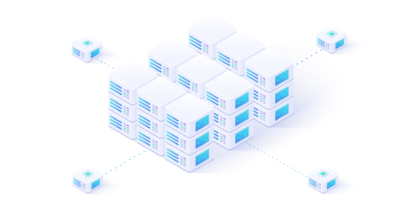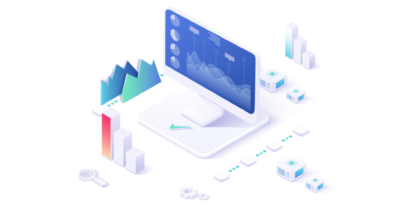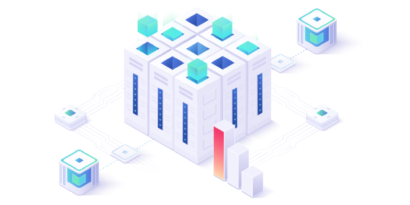Business Intelligence tools in Poland – market leaders
23 June 2025
Reading time: 11 minutes

In today’s fast-paced technological world, Business Intelligence (BI) tools play a key role in transforming data into valuable information, and the global BI market is growing rapidly.
It is worth citing statistics according to which In 2023, the value of the global BI market was about $29.42 billion, and forecasts indicate that by 2029 it will reach $61.86 billion, an annual growth rate of 13.16%.
In Poland, as in the rest of the world, companies are increasingly turning to advanced BI solutions to make better business decisions, optimize processes and increase competitiveness. In this article, we take a look at the market leaders in Business Intelligence tools in Poland, analyzing their innovation and impact on the development of the Polish IT sector.
What is Business Intelligence
Business Intelligence (BI) is a set of tools and technologies that enable the transformation of data into valuable information to support corporate decision-making processes. With BI, companies can analyze historical and current data, identify trends and predict future events to optimize business operations and increase competitiveness. For more information on Business Intelligence, see this article.
Importance of Business Intelligence for organizations
In today’s competitive business environment, business intelligence tools are becoming an indispensable part of data management strategies. With BI, organizations can:
- Make better decisions: Data analysis identifies key trends and patterns to support fact-based decision-making.
- Optimize processes: BI enables monitoring and analysis of operational efficiencies to identify areas for improvement.
- Increase competitiveness: Access to timely and accurate information allows companies to react faster to changing market conditions and better adapt their strategies.
- Manage risk: Analyzing historical and current data helps identify potential risks and develop strategies to minimize risk.
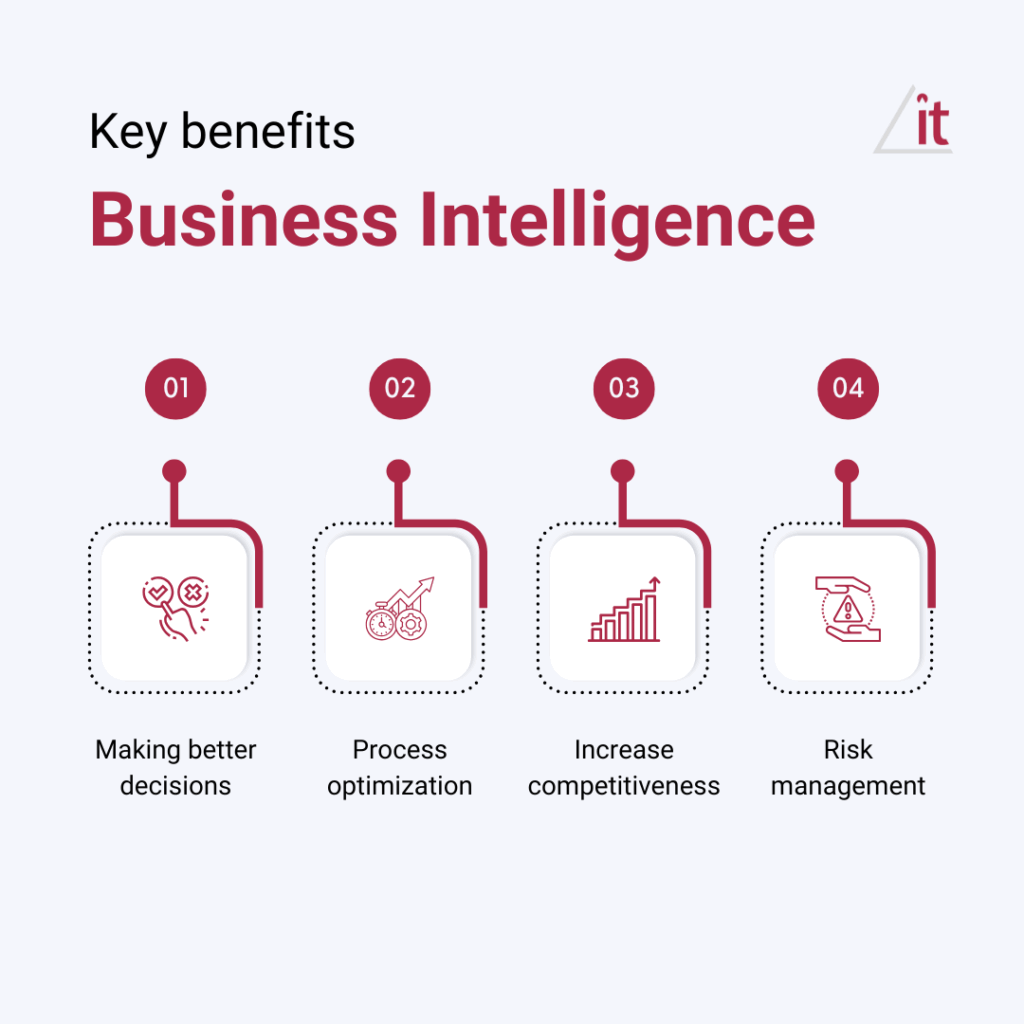
As a result, Business Intelligence contributes to increasing operational efficiency, improving financial performance and building competitive advantages.
A brief overview of available business intelligence tools in Poland
The Polish market enjoys a variety of Business Intelligence tools. Here are a few that stand out from the competition:
- Microsoft Power BI: This tool is a true giant in the BI world. With extensive integration capabilities with various data sources and advanced analytical features, Power BI is the choice of many Polish enterprises.
- Tableau: Tableau enables easy collaboration and data analysis across platforms. It is an ideal solution for companies that value transparency and aesthetics of presented information.
- Qlik Sense: This tool stands out for its advanced analytics and use of artificial intelligence. Qlik Sense allows for comprehensive data management and integration, which is extremely valuable for companies seeking to maximize operational efficiency.
- Google Looker: Looker is a tool that enables the creation of customized reports and visualizations, tailored to an organization’s specific needs. This allows companies to better understand their data and make more informed decisions.
- Oracle Business Intelligence: Oracle BI is a comprehensive solution that combines advanced analytics with performance management and data security. It is ideal for large enterprises that need reliable and scalable solutions.
Each of these tools offers unique features that can be tailored to an organization’s specific needs, helping to transform data into valuable information.
Top three business intelligence tools in Poland
Microsoft Power BI
Microsoft Power BI is one of the most recognized business intelligence tools on the market. It offers extensive integration capabilities with various data sources, advanced analytical features and intuitive visualizations. With Power BI, companies can easily transform data into valuable information that supports decision-making processes.
Adventages:
- Intuitive user interface
- Extensive integration capabilities with various data sources
- Advanced analytical features
- Ability to create interactive reports and dashboards
Disadvantages:
- Requires some technical knowledge to fully utilize all features
- Can be expensive for small businesses
Customer feedback: Customers praise Power BI for its intuitiveness and broad analytical capabilities. Many users also appreciate its ability to integrate with other Microsoft tools, making it easier to manage data in a company’s ecosystem.
Application examples: Power BI is used by many large organizations in Poland, such as banks, telecommunications companies and manufacturing companies that need advanced data analysis and reporting tools.
FAQ
What are the key features of Microsoft Power BI?
Microsoft Power BI offers extensive integration with various data sources, advanced analytical features, an intuitive user interface and the ability to create interactive reports and dashboards.
How does Microsoft Power BI compare to other business intelligence tools on the market?
Power BI wyróżnia się intuicyjnym interfejsem użytkownika oraz szerokimi możliwościami integracji z różnymi źródłami danych. Jest również ceniony za zaawansowane funkcje analityczne i możliwość tworzenia interaktywnych raportów.
What is the pricing model for Microsoft Power BI?
Power BI offers various pricing models, including a free version and paid plans that vary in functionality and integration capabilities. The cost depends on the plan selected and the number of users.
Is Microsoft Power BI suitable for small/medium/large companies?
Power BI is suitable for companies of all sizes. Small companies can use the free version, while medium and large businesses can choose more advanced plans that offer additional features and integration capabilities.
Tableau
Business Intelligence tool that stands out for its intuitive and attractive data visualizations. The solution enables easy collaboration and analysis of data across platforms, making it an ideal choice for companies that value transparency and aesthetics of the information presented.
Adventages:
- Intuitive user interface
- Advanced data visualization capabilities
- Ease of integration with various data sources
- Support for team collaboration
Disadventages:
- Higher cost compared to some other BI tools
- Requires some technical knowledge to fully utilize all features
Customer feedback: Users praise Tableau for its intuitiveness and advanced data visualization capabilities. Many customers also appreciate the ease of integration with various data sources and support for team collaboration.
Examples of use: Tableau is used by many companies in Poland, including those in the financial, retail and manufacturing sectors. The tool helps companies analyze sales data, monitor operational efficiency and create interactive reports.
Qlik Sense
Qlik Sense is an advanced business intelligence tool that stands out for its ability to create interactive data visualizations and advanced analytics. Using artificial intelligence and machine learning, Qlik Sense enables users to quickly and efficiently transform data into valuable information.
Adventages:
- Intuitive user interface
- Advanced analytical capabilities
- Support for artificial intelligence and machine learning
- Ability to integrate with various data sources
Disadventages:
- Can be expensive for small businesses
- Requires some technical knowledge to fully utilize all features
Customer reviews: Users praise Qlik Sense for its advanced analytical capabilities and intuitive interface. Many customers also appreciate the support for artificial intelligence, which allows for more advanced data analysis.
Application examples: Qlik Sense is used by many companies in Poland, including those in the financial, retail and manufacturing sectors. The tool helps companies analyze sales data, monitor operational efficiency and create interactive reports.
FAQ:
What are the key features of Qlik Sense?
Qlik Sense offers advanced analytical capabilities, an intuitive user interface, support for artificial intelligence and machine learning, and the ability to integrate with various data sources.
How does Qlik Sense compare to other business intelligence tools on the market?
Qlik Sense stands out for its advanced analytical capabilities and support for artificial intelligence and machine learning. It is valued for its intuitive user interface and ability to integrate with various data sources, making it a competitive tool in the BI market.
What is the pricing model of Qlik Sense?
Qlik Sense is suitable for companies of all sizes. Small companies can use
basic plans, while medium and large businesses can choose more advanced plans that offer additional features and integration capabilities.
Other available business intelligence tools in Poland
Overview of other popular business intelligence tools available in Poland
The Polish market for business intelligence tools is rich and diverse. In addition to leaders such as Microsoft Power BI, Tableau and Qlik Sense, there are many other tools that have also gained recognition among Polish enterprises. Here are a few of them:
- Google Looker: A tool that allows the creation of custom reports and visualizations, ideal for companies looking for flexible solutions.
- Oracle Business Intelligence: A comprehensive solution that combines advanced analytics with performance management and data security.
- SAP BusinessObjects: A tool that offers extensive analysis and reporting capabilities, especially valued by large organizations.
- IBM Cognos Analytics: An advanced BI tool that enables interactive reports and dashboards to support team collaboration.
Advantages and disadvantages of each tool
Google Looker
Pros: Intuitive interface, flexibility in creating reports, integration with various data sources.
Cons: Can be expensive for small businesses, requires some technical knowledge.
Oracle Business Intelligence
Pros: Advanced analytical features, performance management and data security, scalability.
Cons: High cost, complex configuration.
SAP BusinessObjects
Pros: Extensive analysis and reporting capabilities, integration with various data sources, support for large organizations.
Cons: High cost, requires advanced technical knowledge.
IBM Cognos Analytics
Pros: Advanced analytical features, ability to create interactive reports, support for team collaboration.
Cons: High cost, complex configuration.
How do you choose the right business intelligence tool for your organization?
Key criteria for selecting business intelligence tools
Choosing the right business intelligence (BI) tool can be critical to the success of your organization. Here are some key criteria to consider:
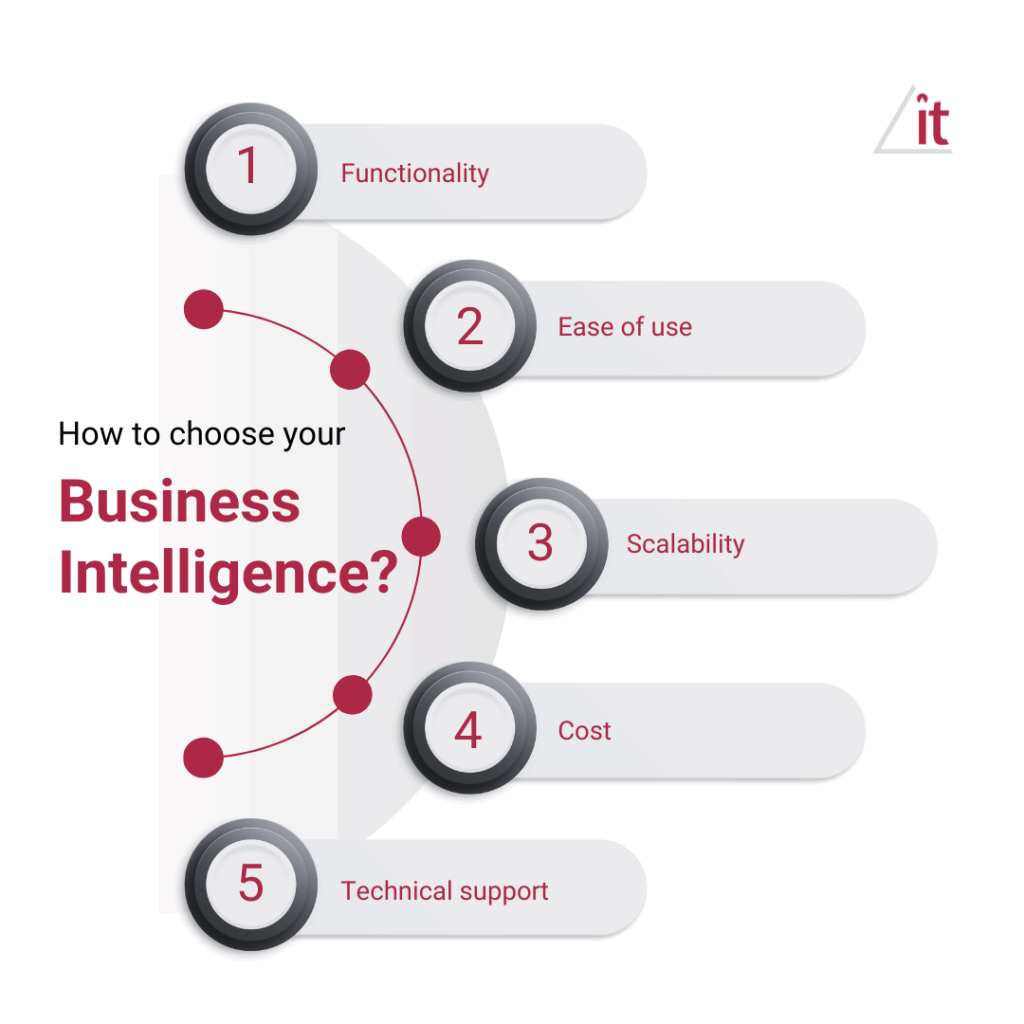
- Functionality: Make sure the tool offers all the necessary features, such as advanced analytics, data visualization, integration with various data sources and the ability to create interactive reports.
- Ease of use: The tool should be intuitive and easy to use so that all users can use it without the need for lengthy training.
- Scalability: Choose a tool that can grow with your business, offering additional features and capabilities as your organization grows.
- Cost: Consider the costs associated with purchasing, implementing and maintaining the tool. Make sure the solution you choose is within your company’s budget.
- Technical support: Check whether the tool provider offers technical support and user training. Such a provider is summ-it, which offers comprehensive BI services.
With summ-it, you won’t just implement business intelligence tools like Power BI – we also provide report auditing and maintenance and development.
How do you gather requirements and evaluate tools in the context of your organization?
Before deciding on a specific BI tool, it’s a good idea to conduct a thorough analysis of your organization’s needs. Here are some steps that can help you do so:
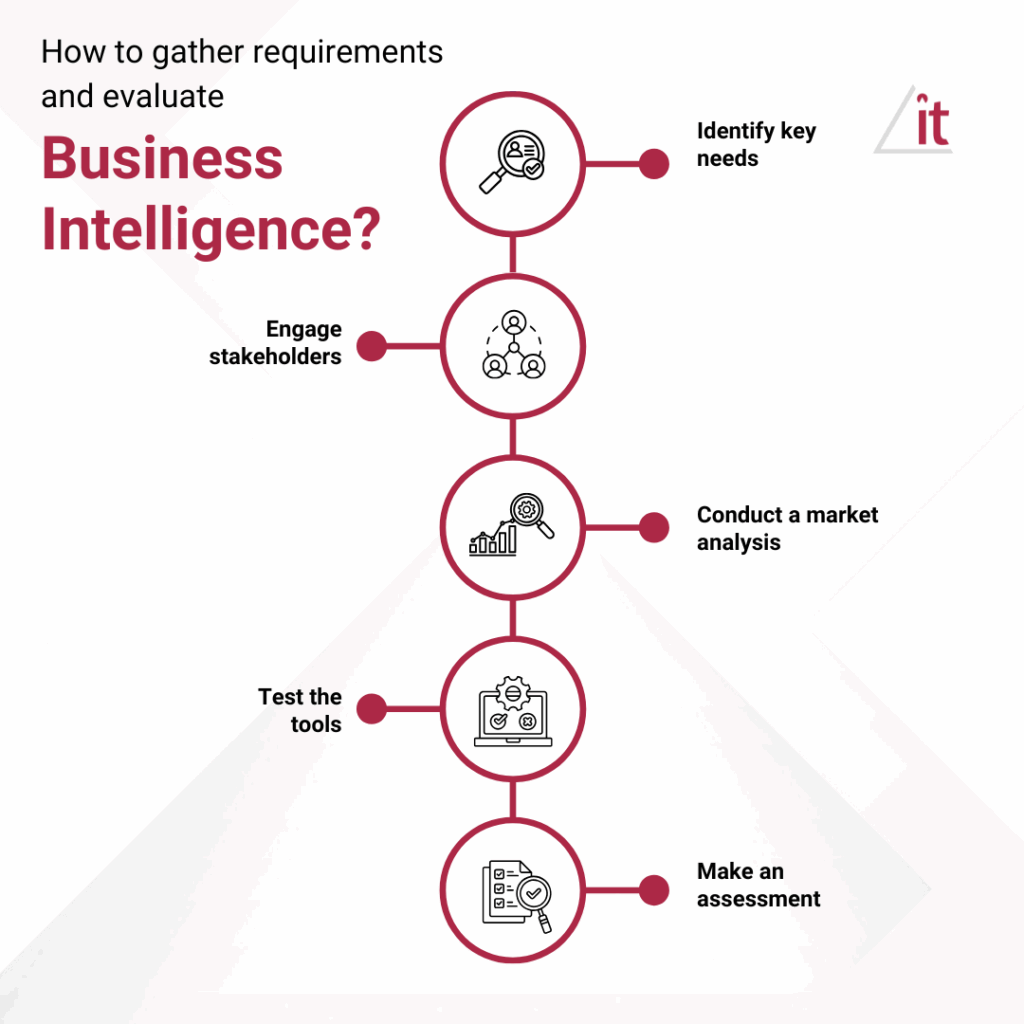
- Identify key needs: Identify what data and analytics are most important to your business. Consider what problems you want to solve with a BI tool.
- Engage stakeholders: Consult with different departments in the company to understand their needs and expectations from the BI tool.
- Conduct a market analysis: Research the BI tools available on the market, compare their features, costs and user feedback.
- Test the tools: Use trial or demo versions to test selected tools in practice and assess their suitability for your organization.
- Conduct an evaluation: Based on the information gathered, evaluate the tools and select the one that best meets your company’s requirements.
FAQ
What criteria should be considered when selecting a business intelligence tool?
When choosing a BI tool, it is worth considering criteria such as functionality, ease of use, scalability, cost and technical support.
What are the most common mistakes made when selecting business intelligence tools?
The most common mistakes are failure to thoroughly analyze the organization’s needs, selecting a tool without testing it in practice, underestimating costs, and failing to involve stakeholders in the selection process.
What questions should you ask before buying business intelligence tools?
Before purchasing a BI tool, it’s worth asking questions about the tool’s functionality, its integration with existing systems, implementation and maintenance costs, the availability of technical support, and the tool’s ability to grow with the company.
Trends in the development of business intelligence tools
Overview of the latest trends in the development of business intelligence tools
The year 2025 brings another wave of disruptive changes in the way organizations approach data. Companies are increasingly relying on technology to transform raw information into actionable insights. Here are the key trends that are shaping the development of Business Intelligence:
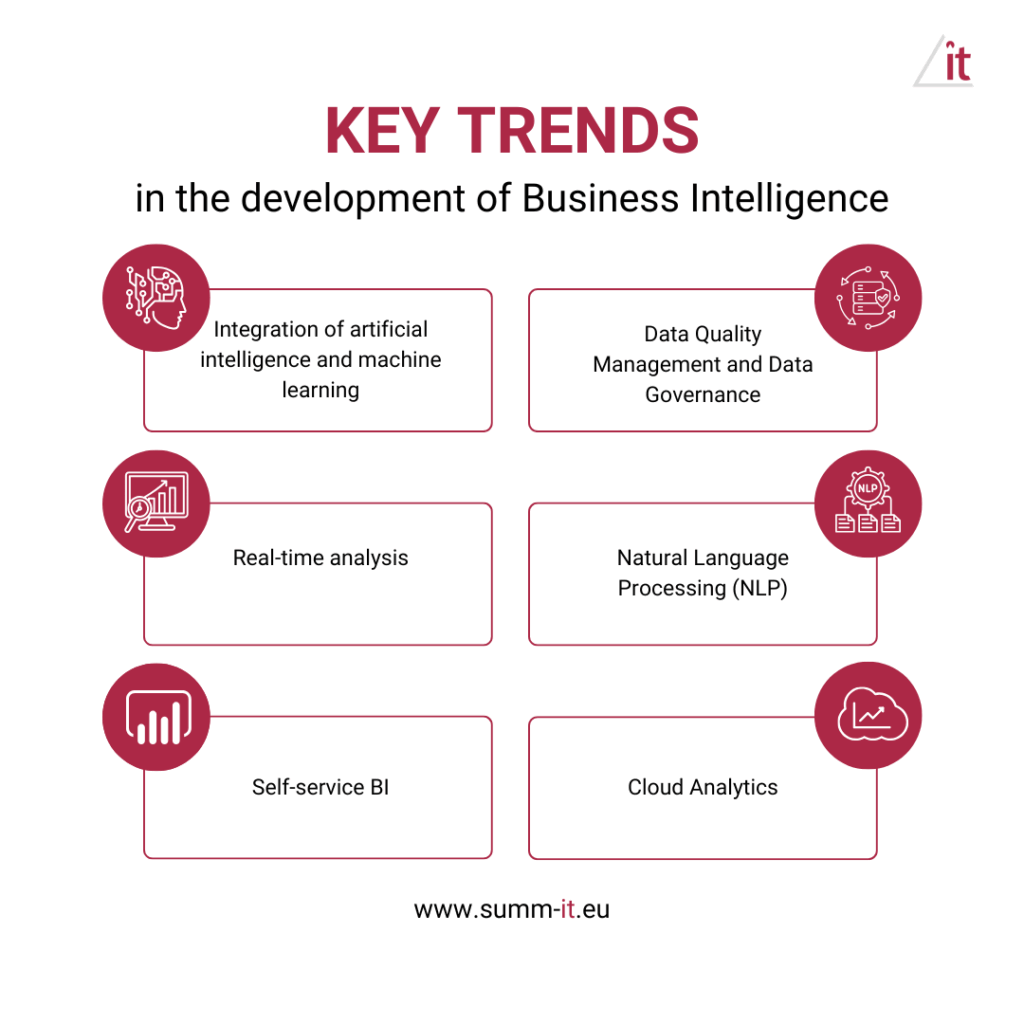
- Integrating artificial intelligence and machine learning: AI and ML play a key role in BI, automating the discovery of relationships in data and generating predictions for faster decision-making.
- Real-time analytics: The pace of business requires quick access to up-to-date data. Real-time analytics enables organizations to respond to market changes when they occur.
- Self-service BI: Self-service BI tools allow business users to create analytics and reports on their own, without the need for IT specialists.
- Data Quality Management and Data Governance: The growth of data makes ensuring its quality a key challenge. Data Governance is gaining importance as a foundation for effective analytics.
- Natural Language Processing (NLP): NLP is revolutionizing the way interacts with data, making it possible to ask questions in natural language and get answers in the form of clear visualizations.
- Cloud Analytics (Cloud): Moving analytics to the cloud allows companies to better manage data and scale in a rapidly changing business environment.
Examples of innovation and new functionality
Innovations in BI tools are constantly evolving, introducing new functionalities that make data analysis easier:
- Augmented analytics: Using AI and ML to streamline data preparation, generate insights and share information.
- Edge analytics: Processing data at the source, which reduces latency and increases security.
- Explainable Artificial Intelligence (XAI): Provide understandable explanations for AI-based insights, which supports trust and regulatory compliance.
- Collaborative BI: Integrating BI tools with collaborative platforms, making it easier to share and discuss insights across teams.
Prospects for the development of the market of Business Intelligence tools in Poland
The market for BI tools in Poland is growing rapidly, and companies are increasingly investing
in advanced analytical solutions. The increased interest in BI tools is driven
by the need for quick access to up-to-date data and the ability to make more informed business decisions. The future of the BI market in Poland looks promising,
with the further development of AI, ML and cloud analytics technologies.
Polish companies are beginning to recognize the benefits of BI tools, such as improved operational efficiency, better risk management and increased competitiveness. As these technologies become more accessible and affordable, more companies are choosing to implement them.
In addition, the growing number of BI tool providers on the Polish market and the development of local technology companies are contributing to increased competition and innovation in the sector.
As a result, Polish companies have access to a wide range of advanced solutions that can be tailored to their specific needs.
FAQ
What are the latest trends in the development of business intelligence tools?
Key trends include AI and ML integration, real-time analytics, self-service BI, data quality management, natural language processing and cloud analytics.
What new functionalities are currently being developed by manufacturers of business intelligence tools?
Producenci rozwijają funkcjonalności takie jak rozszerzona analityka, analityka brzegowa, wytłumaczalna sztuczna inteligencja oraz collaborative BI, które ułatwiają analizę danych
i wspierają współpracę zespołową.
Summary
Key findings and reflections on Business Intelligence tools available on the Polish market
Business Intelligence (BI) tools play a key role in transforming
data into valuable information that supports decision-making in organizations. There are many advanced BI tools available on the Polish market, such as Microsoft Power BI, Tableau, Qlik Sense, Google Looker, Oracle Business Intelligence, SAP BusinessObjects and IBM Cognos Analytics. Each of these tools offers unique features that can be tailored to companies’ specific needs.
Prospects for the development of business intelligence tools in the context of organizational requirements
The market for BI tools in Poland is growing rapidly, and companies are increasingly investing
in advanced analytical solutions. The increased interest in BI tools is driven
by the need for quick access to up-to-date data and the ability to make more informed business decisions. The future of the BI market in Poland looks promising,
with the further development of AI, ML and cloud analytics technologies.
Companies such as sum-it, which offer 24/7 technical support and experience working with a variety of industries, can play a key role in this development, ensuring data security and operational efficiency.
FAQ:
Are business intelligence tools necessary for organizations?
Yes, BI tools are extremely useful to organizations because they enable them to transform data into valuable information that supports decision-making and improves operational efficiency.
What are the prospects for the development of business intelligence tools in Poland?
The prospects for the development of BI tools in Poland are very promising. As AI, ML and cloud analytics technologies become more accessible, more and more companies are choosing to implement them, contributing to increased competitiveness and innovation in the market.
What are the biggest challenges in implementing business intelligence tools in organizations?
The biggest challenges are lack of thorough analysis of the organization’s needs, selection of a tool without testing it in practice, underestimation of costs, and lack of stakeholder involvement in the selection process.
Why do organizations need business intelligence tools?
Organizations need BI tools to transform data into valuable information that supports decision-making, improves operational efficiency, manages risk and enhances competitiveness.
What are the advantages of business intelligence tools for organizations?
Zalety narzędzi BI to możliwość podejmowania lepszych decyzji, optymalizacja procesów, zwiększenie konkurencyjności, zarządzanie ryzykiem oraz poprawa efektywności operacyjnej.
 WhatsApp
WhatsApp
